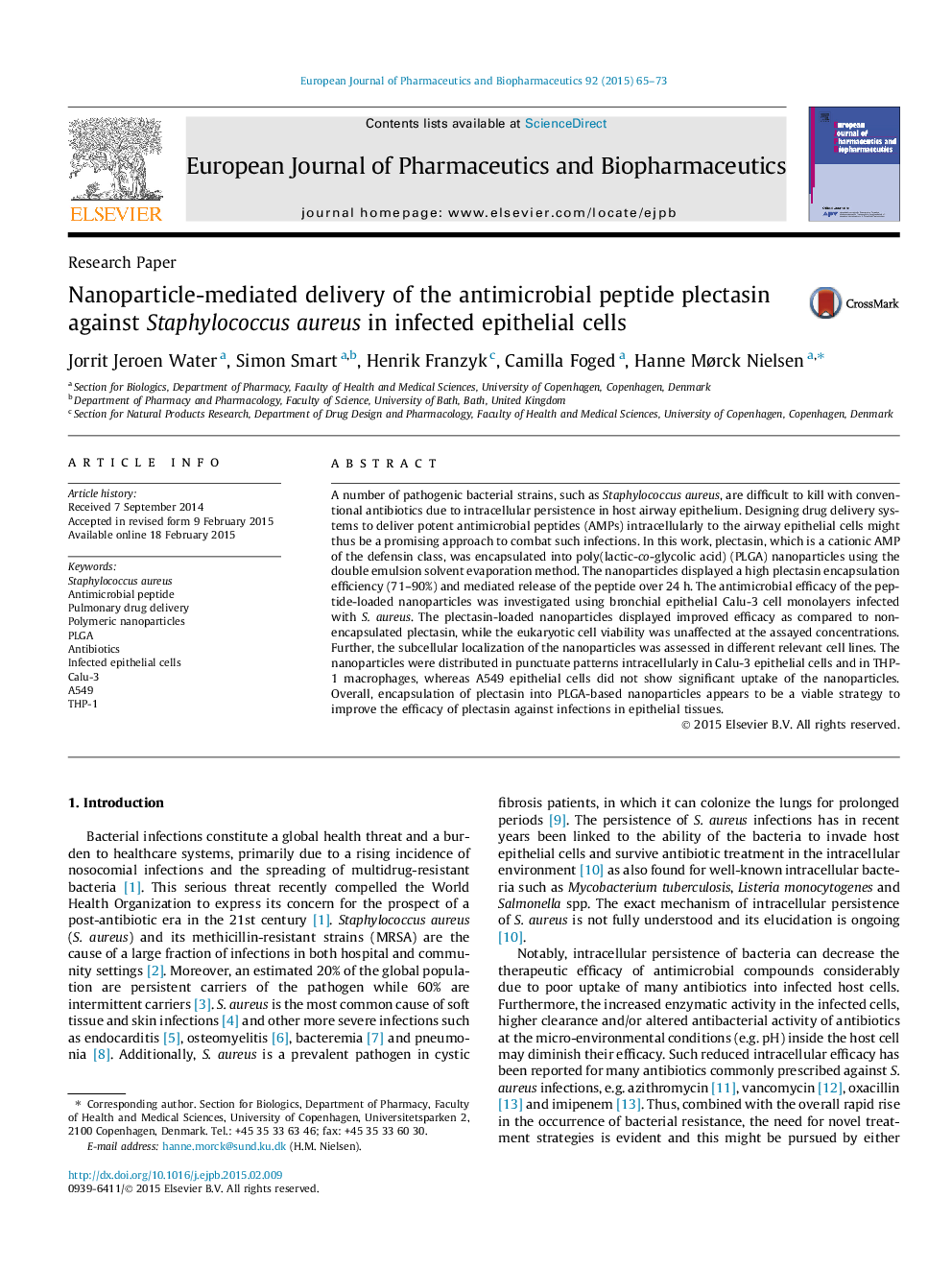| کد مقاله | کد نشریه | سال انتشار | مقاله انگلیسی | نسخه تمام متن |
|---|---|---|---|---|
| 2083338 | 1545333 | 2015 | 9 صفحه PDF | دانلود رایگان |
• The antimicrobial peptide plectasin was encapsulated in PLGA nanoparticles (NPs).
• The encapsulation efficiency of plectasin was as high as 71–90%.
• The NPs showed increased efficacy against S. aureus in infected Calu-3 monolayers.
• The subcellular localization of the NPs was investigated in Calu-3, THP-1 and A549 cells.
A number of pathogenic bacterial strains, such as Staphylococcus aureus, are difficult to kill with conventional antibiotics due to intracellular persistence in host airway epithelium. Designing drug delivery systems to deliver potent antimicrobial peptides (AMPs) intracellularly to the airway epithelial cells might thus be a promising approach to combat such infections. In this work, plectasin, which is a cationic AMP of the defensin class, was encapsulated into poly(lactic-co-glycolic acid) (PLGA) nanoparticles using the double emulsion solvent evaporation method. The nanoparticles displayed a high plectasin encapsulation efficiency (71–90%) and mediated release of the peptide over 24 h. The antimicrobial efficacy of the peptide-loaded nanoparticles was investigated using bronchial epithelial Calu-3 cell monolayers infected with S. aureus. The plectasin-loaded nanoparticles displayed improved efficacy as compared to non-encapsulated plectasin, while the eukaryotic cell viability was unaffected at the assayed concentrations. Further, the subcellular localization of the nanoparticles was assessed in different relevant cell lines. The nanoparticles were distributed in punctuate patterns intracellularly in Calu-3 epithelial cells and in THP-1 macrophages, whereas A549 epithelial cells did not show significant uptake of the nanoparticles. Overall, encapsulation of plectasin into PLGA-based nanoparticles appears to be a viable strategy to improve the efficacy of plectasin against infections in epithelial tissues.
Figure optionsDownload high-quality image (129 K)Download as PowerPoint slide
Journal: European Journal of Pharmaceutics and Biopharmaceutics - Volume 92, May 2015, Pages 65–73
